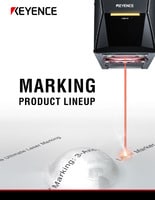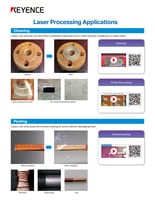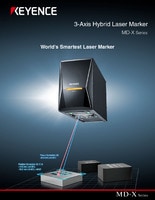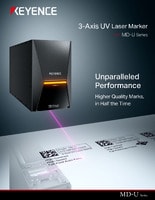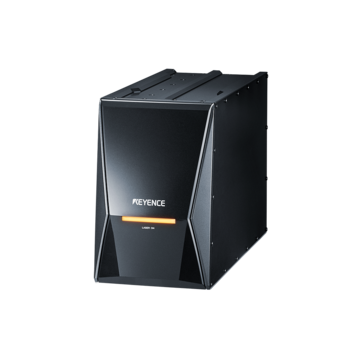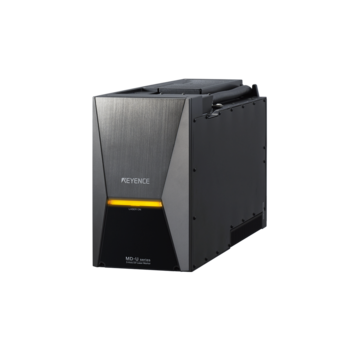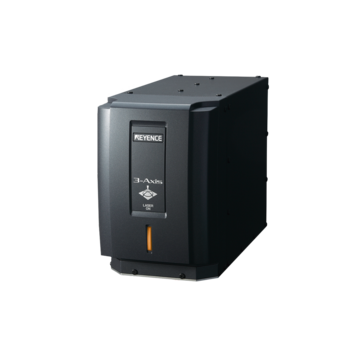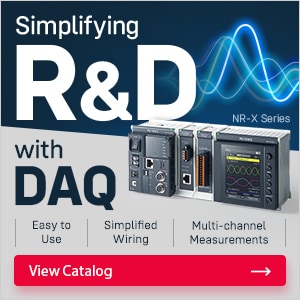Industrial Laser Marking Systems / Laser Markers
What is Surface Preparation and Why It Matters
-
Tags:
- Laser Ablation , Laser Rust Removal , Battery
Key Takeaways
- Proper surface preparation is crucial to ensure strong adhesion and long-lasting quality in marking and coating processes.
- Contaminants like oil, dust, and oxidation can disrupt marking accuracy and interfere with coating longevity.
- Different cleaning methods—chemical, mechanical, and ultrasonic—are chosen based on material type and contamination severity.
- Laser cleaning provides a precise, flexible, and eco-friendly alternative that removes contaminants without damaging the base material.
- Thorough preparation improves durability and traceability, reducing rework and ensuring consistent, readable marks over time.
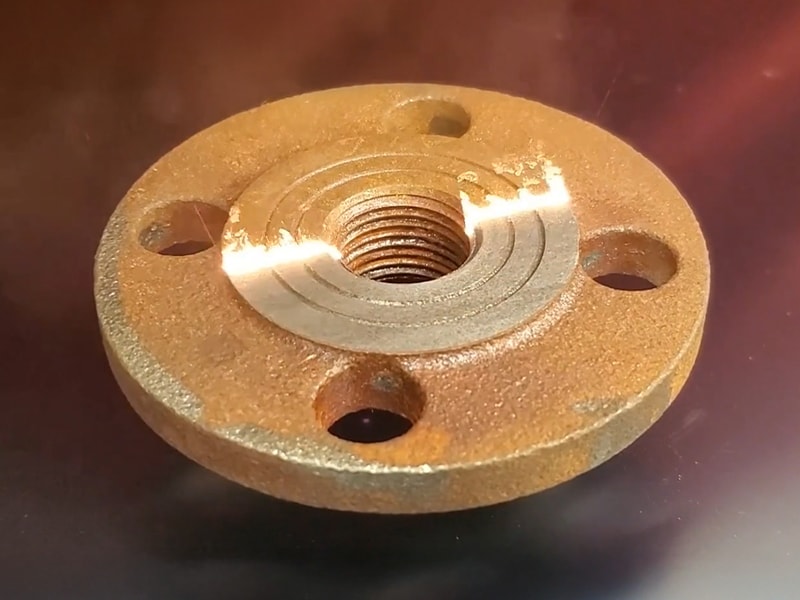
Getting the right surface condition before marking or coating makes the difference between work that lasts and work that fails. Surface preparation involves cleaning, treating, and conditioning materials to create optimal conditions for subsequent processes like marking, painting, or bonding. Without proper preparation, even the most advanced equipment can produce poor results that waste time and materials.
Manufacturing professionals know that skipping preparation steps leads to adhesion problems, inconsistent marking quality, and premature failure of coatings or marks. The investment in proper preparation pays off through better durability, improved appearance, and reduced rework. Different materials and applications require specific approaches to achieve the best results.
Understanding the Role of Surface Preparation
Surfaces rarely come ready for marking or coating applications straight from manufacturing or storage. Oils from handling, oxidation from exposure, dust from the environment, and residues from previous processes all interfere with how well marks adhere or how coatings perform. Industrial surface preparation removes these contaminants while creating the right surface texture for optimal adhesion.
Think of surface preparation like painting a house. Nobody would paint over dirt, grease, or loose paint because the new paint wouldn't stick properly and would peel off quickly. The same principle applies to industrial marking and coating processes. Clean, properly prepared surfaces provide the foundation for durable, high-quality results.
The preparation process often involves multiple steps depending on the material and end application. Some surfaces need only light cleaning to remove fingerprints and dust, while others require aggressive treatment to remove heavy oxidation or existing coatings. Each material presents unique challenges that require specific solutions.
We’re here to provide you with more details.
Reach out today!
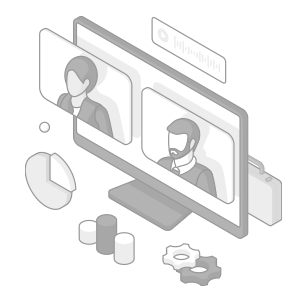
How Preparation Impacts Marking Quality
Poor surface conditions create visible problems in finished work that customers notice immediately. Marks may appear faded, uneven, or incomplete when contaminants interfere with the marking process. Surface cleaning for laser marking becomes especially important because laser energy must interact directly with the material surface to create lasting, legible marks.
Contaminants act like barriers between the laser beam and the base material. Oil films can cause the laser energy to scatter or reflect rather than penetrate properly. Oxide layers may absorb energy unevenly, creating inconsistent mark depth or appearance. Even thin dust layers can interfere with precise laser marking applications.
Consistency across production runs depends heavily on having similar surface conditions for each part. When some parts are cleaner than others, the marking results vary even with identical machine settings. This inconsistency creates quality control problems and may require sorting or rework of finished parts.
Applying marks over polluted surfaces reduces their long-term durability. After frequent use or exposure to the environment, initially acceptable marks may fade, wear off, or become unreadable. Applications that need traceability or permanent identification may face significant issues as a result of this failure.
Methods of Industrial Surface Preparation
There are numerous surface preparation methods, each having unique benefits for certain materials and uses. Substrate cleaning methods include everything from straightforward solvent wiping to intricate multi-step procedures, including chemical and mechanical treatments. The type of material, degree of contamination, and performance requirements all influence which approach is best.
Solvent cleaning uses chemicals to dissolve oils, greases, and other organic contaminants. Different solvents work better on specific types of contamination. Degreasing solvents remove machining oils and handling residues, while specialized cleaners target adhesives or coatings.
Abrasive cleaning physically removes contaminants and surface irregularities through mechanical action. Sandblasting, wire brushing, and grinding fall into this category. These methods can remove heavy contamination and create specific surface textures, but they also remove base material and may create surface stress.
Ultrasonic cleaning uses high-frequency sound waves in liquid baths to remove contaminants from complex geometries and hard-to-reach areas. This method works well for precision parts with intricate features where manual cleaning is difficult.
The process creates microscopic bubbles that form and collapse rapidly throughout the cleaning solution, creating tiny shock waves that dislodge dirt from surface crevices. These bubbles reach into threaded holes, narrow channels, and intricate part details that brushes or spray cleaning can't access effectively.
Mechanical vs. Chemical Cleaning Techniques
Sandblasting and wire brushing physically scrub away dirt while creating rougher surfaces. Acids tackle rust problems, and alkaline solutions break down oils and greases.
Physical scrubbing works great on thick buildup but can scratch delicate parts. Chemical baths are easier on fragile materials, yet struggle with really stuck-on grime. Liquid cleaners flow into tight spaces that brushes can't reach and treat complicated shapes more evenly. They won't stress or change your base material either.
Money matters when picking cleaning methods. Blasting needs equipment and sand or beads, but you see results fast. Chemical baths cost more for solutions and disposal, though you can clean many parts at once. Surface treatment methods often mix both ways to get better results without breaking the budget.
Advantages of Laser-Based Surface Preparation
Laser cleaning represents a significant advance in surface preparation for coating and marking applications, using precisely controlled laser energy to remove contaminants without touching the surface or using chemicals. Operators can remove specific layers like paint, rust, or oils while leaving the base material unchanged—something impossible with traditional methods. The process requires only electrical power, eliminating ongoing costs for abrasives, chemicals, and disposal fees.
Environmental benefits include no chemical waste, no abrasive disposal, and no secondary contamination from cleaning media. Facilities can often eliminate hazardous waste streams and reduce environmental compliance requirements by switching to laser cleaning.
Laser processing applications continue expanding as the technology becomes more accessible and cost-effective. Industries from aerospace to electronics have adopted laser cleaning for applications where traditional methods fall short.
When to Use Laser Cleaning vs. Alternatives
Laser cleaning works best for precision applications requiring consistency or environmental compliance. Laser marking applications benefit from laser preparation since both processes can be integrated into a single operation.
High-value parts justify the investment through reduced rejection rates and rework costs. Traditional methods suit simple cleaning tasks or large areas where speed matters more than precision. Facilities using laser marker systems can add cleaning capabilities more cost-effectively than separate processes.
Explore comprehensive laser marker applications to see how proper surface preparation enhances marking quality and durability across industries.
Ensure every mark lasts - choose laser-ready surfaces.
Contact us to learn more about how our advanced technology can help take your business to the next level.
Contact Us
FAQs
How Does Surface Preparation Improve Traceability in Production?
Clean surfaces accept marks more completely and consistently, creating legible identification codes that last throughout the product lifecycle. Proper preparation prevents mark degradation that could make parts untraceable, which is especially important for regulated industries requiring permanent identification.
Can Poor Surface Prep Cause Defects in Laser Engraving?
Yes, contaminants can cause uneven energy absorption, leading to inconsistent mark depth, poor contrast, or incomplete marking. Oil films may burn and discolor surrounding areas, while oxidation can prevent proper laser penetration, resulting in faded or illegible marks.
Is Laser Surface Preparation Environmentally Safer Than Chemicals?
Laser cleaning eliminates chemical waste streams and disposal requirements while producing no secondary contamination. The process uses only electrical power and creates minimal waste, typically just the removed contaminants that can often be collected and recycled.
Surface preparation might seem like an extra step, but it's actually the foundation of quality results that last. Whether you're marking parts for traceability or preparing surfaces for coating, taking time to properly prepare surfaces pays off through better adhesion, improved appearance, and longer-lasting results.
We’re here to provide you with more details.
Reach out today!


